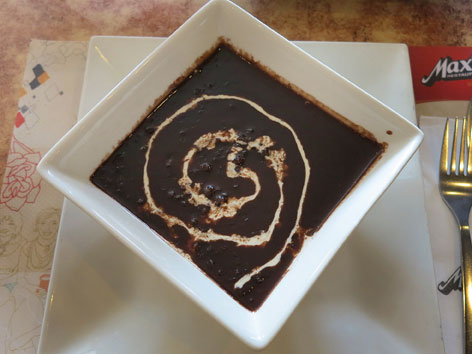Ethiopian Chicken Stew (Doro Wett)
Ethiopia
amantour
guides you to the best local dishes & drinks in
125+ cities. See map now



.jpg) Going somewhere and wish you could take all of a city’s Eat Your World info with you? With EYW’s Kindle and City Guides, you can! Don’t miss out on any local foods or drinks during your next trip.
Going somewhere and wish you could take all of a city’s Eat Your World info with you? With EYW’s Kindle and City Guides, you can! Don’t miss out on any local foods or drinks during your next trip.
EYW wants your food photos!

EYW wants your food stories!
Hey guys I am a traveler who loves to explore different places around the world. I often visit outside of Canada, So whenever I have to travel around the world I always book my flight tickets from the... Read more

What: Champorado (“cham-po-rah-do”) is the local version of chocolate rice porridge. Sticky rice is boiled until the rice grains are chewy but not mushy, then tablea (tablet-shaped local chocolate) and sugar are added to create a rich, chocolatey porridge. Evaporated milk, cream, or coconut milk is usually swirled on top just before serving.
The dish traces its origins to Mexican champurrado (see entry), a warm, chocolate-flavored drink thickened by corn flour and flavored with vanilla, cinnamon, or anise. Thanks to the Manila-Acapulco Galleon Trade in the 17th century, the people of Manila quickly caught on to this lovely comfort food, and began substituting rice for the corn. As in Mexico, champorado is favored at breakfast time or as a rainy-day snack, when it can be downright irresistible. Unlike in Mexico, this champorado is not sipped but eaten with a spoon, more like a pudding.
Where: We were pleasantly surprised to learn that the Max’s Restaurant chain (632-556-0521; multiple locations including ground floor, main mall, SM Mall of Asia, Pasay City, map) not only serves great, unbattered fried chicken, but a slew of standard Filipino dishes, including champorado, as well.
When: Daily, 10am-10pm
Order: Max’s Triple Chocolate Champorado (Php 97.90 for regular size), a standard-sized soup bowl filled with the thick concoction, evaporated milk swirled on top. It’s a simple yet decadent treat, with each grain of rice coated in luscious chocolate—traditional bitter dark chocolate, to be precise, so it’s not overly sweet. Manileños typically choose to contrast the potentially cloying richness with something savory, ideally a small handful of dilis (“dee-lis,” dried anchovies) or tuyo (“too-yo,” fried salted dried fish) on the side (or danggit in Cebu). As those snacks weren’t available here, we chose some tokwa’t baboy (“tok-wa-at bah-boy”), fried cubes of tofu and pork dressed in vinegar, soy sauce, and onions, and somehow got the local logic right—the savory flavors cut through the richness of the champorado, letting us enjoy it even more.
Alternatively: Manila Bake (206 A Katipunan Ave., Blue Ridge, Quezon City, map) serves champorado with an unusual twist by using super sticky tapol (“tah-pol”) rice. This type of rice is purple to nearly black in color, and is more glutinous and trickier to cook, but the risk is well worth the result here: Less sweet but extra chewy, with a hint of coconut milk, this champorado seems closer to suman than rice in a thick chocolate soup.
©2025 Eat Your World, LLC - All Rights Reserved